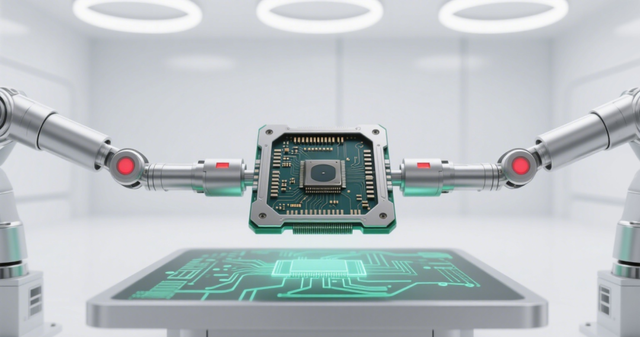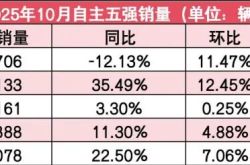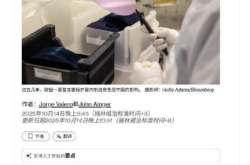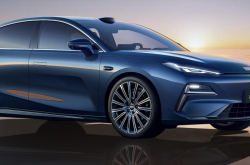Ultraman Bets Big on India, Faces Hurdles Due to Power Shortage
![]() 09/04 2025
09/04 2025
![]() 556
556
Source: SourceByte
"Electricity is the ultimate battleground for AI."
When Musk made this candid remark recently, many in Silicon Valley likely dismissed it as another of his eccentric statements.
However, on September 1, Bloomberg reported that Ultraman, the man behind ChatGPT who redefined the world, is planning to expand his $100 billion "Star Gate" project into India on an unprecedented scale.
The planned computing power for this endeavor is at least 1 gigawatt—a power-hungry beast.
Almost simultaneously, Musk's Tesla, after a nine-year wait in the Indian market, delivered disappointing results.
As the most knowledgeable tycoon in Silicon Valley regarding electricity, Musk remains controversial in the consumer market for new energy vehicles, but for AI projects, he unwaveringly places his core stake in China, emphasizing that China's abundant electricity will dictate the future trajectory of the AI field.
Two prominent figures in Silicon Valley. Two starkly contrasting Asian bets.
One bets on the future. The other on reality.
This scenario suddenly becomes intriguing.
01 Is the "Indian AI Moment" Arriving?
Ultraman's enthusiasm for India is unmistakable.
"It may soon become the largest market."
To cater to this "soon," OpenAI has even tailored a low-cost subscription plan called ChatGPT Go for India, with a monthly fee of only 399 rupees, equivalent to about 32 yuan in Chinese currency.
It's practically free.
Price reductions, goodwill, and suggestions—the culmination of these actions is the ultimate plan for "Star Gate." In OpenAI's blueprint, India is not only a vast user market but will also become a crucial infrastructure hub for its global AI empire.
In fact, Ultraman's move can be seen as a situation-based prescription. Microsoft has already announced an additional investment of $3 billion in India to build data centers, followed by Google's $6 billion plan. Mukesh Ambani, Asia's richest man, also vowed to build a giant data center with a capacity of 3 gigawatts.
Giants are flocking in, as if India has already stepped into the spotlight of the "AI Moment."
The Indian government is obviously thrilled to embrace this narrative. Ashwini Vaishnaw, the Minister of Railways, announced with high profile that India will develop its own large language model within 10 months. In March last year, the cabinet approved a special allocation of $1.25 billion for the "India AI Mission."
However, amidst all the excitement, India will face a fragile AI foundation.
The official ambition soon encountered internal disputes over the route. A group of industry leaders, represented by Nilekani, co-founder of IT giant Infosys, explicitly opposed India's participation in the costly LLM competition. They emphasized that building more cost-effective small language models (SLM) is more aligned with India's national conditions.
Even more daunting than the route dispute is the reality of the "three deficits."
GPU is the "fuel" for AI model training, and the current number of GPUs in India is only 18,693. This number is a fraction of what is needed to train a cutting-edge AI model. More severely, in the chip export restrictions announced by the United States in early January this year, India was classified as a Tier 2 country, meaning that by 2027, the upper limit for exporting high-end GPUs to India will be only 50,000.

Conceptual image generated by AI | Made by SourceByte
The fear is that when "Star Gate" lands, the chips will not be available in time, leaving only an empty shell.
In terms of funding, the government's investment of $1.25 billion may sound substantial, but it pales in comparison to the global AI arms race, where hundreds of billions are often at stake. "If India does not increase its investment in AI innovation and research and development by 100 times now, we may become insignificant in the future," venture capitalist Swaroop admitted frankly.
In terms of talent reserves, India is clearly not ready to embrace AI. India has the largest number of AI professionals globally (420,000), accounting for 20% of the world's total, and ranking first globally in terms of "AI skill penetration" and talent concentration. However, about 15% of these high-end talents have mostly migrated overseas.
According to the disclosure of the Indian Entrepreneur magazine, there are less than 2,000 active senior AI engineers in India who build core AI products and services.
For India, Ultraman's bet seems somewhat impulsive.
02 Musk's "Reverse Bet"
Perhaps no one understands the complexity of India's landscape better than Musk.
Faced with Ultraman's moves, whom he has had a love-hate relationship with for years, he would likely respond with sarcasm.
These two men have long been rivals.
The story dates back to 2015 when Musk and the nascent Ultraman hit it off at a dinner in Palo Alto and jointly founded a non-profit AI research studio named OpenAI. The initial intention was noble: to create an open-source, open AI system not controlled by any enterprise, serving as the best firewall to prevent humans from abusing AI. Musk invested $44 million for this purpose, contributing money and effort, giving everything he had.
But history played a cruel joke. In 2018, the two sides split due to differences in development philosophies. After Musk left, OpenAI quickly established a for-profit department and embraced Microsoft in 2020. The once "human guardian" eventually became Microsoft's "money-making tool."
This year, Musk even directly sued OpenAI in court.
Therefore, when Ultraman places his bet on India, Musk almost instinctively chose another path, which includes both commercial acumen and perhaps a trace of personal grievances destined by fate.
His Tesla just experienced a setback in India after waiting for nine years.
In July this year, the first Tesla India showroom finally appeared on the streets of Mumbai, but it was not greeted with market frenzy. Since sales began in mid-July, as of the end of August, Tesla had only received slightly more than 600 car orders in India.
The number 600 is roughly equivalent to the number of vehicles Tesla delivered globally every four hours in the first half of this year.
It should be noted that Musk had plans to enter the Indian market as early as 2016.
The Model Y shipped from Tesla's Shanghai Gigafactory has a minimum starting price of 5.989 million rupees, equivalent to about 500,000 yuan in Chinese currency, after including a series of high tariffs and surcharges. In 2023, India's per capita GDP was only $2,696. In this market, where fuel motorcycles are still the primary means of transportation and electric vehicle penetration is only 4%, this price seems out of place.
Moreover, there are scarce charging piles, chaotic traffic, and cows and potholes that may appear on the road at any time.
At this moment, Musk may deeply miss the robust infrastructure of China's new energy vehicles.
People still remember that in 2019, when Tesla's stock price fell below $200 and was on the brink of bankruptcy, it was China's land, bank loans, and "China Speed" that built the Shanghai Gigafactory in just 357 days, pulling it back from the brink of collapse. Musk himself also bluntly stated: "Without China's support, there would be no Tesla today."
He once made a surprising remark: "xAI will soon surpass any company except Google, but Chinese companies will be the strongest competitors because they have much more electricity than the United States and are super strong in hardware construction."

When all Silicon Valley tycoons were still enthralled with algorithms and software, Musk was already fighting for energy and physical world infrastructure. Data from David Fishman, an expert who has long tracked China's power, shows that China's power reserve margin has consistently been maintained at 80% to 100%, while the United States usually has only 15%.
Therefore, in the era of AI, Musk once again unhesitatingly chose to embrace China. On August 22 this year, Tesla announced a cooperation with ByteDance's Volcano Engine. The newly launched Model Y L model will be equipped with the Doubao large model and DeepSeek model.
After encountering significant resistance in the Indian market, Musk quickly placed the core stake of AI applications on the Chinese market, which has been repeatedly proven successful. This is Musk's "Oriental Code" and his silent, voting with his feet against his old rival Ultraman's bold bet on India.
03 Short on Power, Not on People
India's most fatal shortcoming, which is precisely what Musk values most, is electricity.
In Kanpur, an industrial hub in northern India, there is a story about a "grid Spider-Man" named Singh.
This renowned "electricity thief" has become a legendary figure in the eyes of locals due to his "superior skills."
This slightly magical story reveals the cruelest truth of India's power system.
Kanpur, a city with a population of 2.7 million, has only 500,000 registered electricity users, most of whom are in arrears for a long time. The power company has accumulated losses of up to 20 billion rupees, equivalent to 1.72 billion yuan in Chinese currency, with aging equipment and on the brink of bankruptcy. During the peak summer electricity usage period, power outages of more than ten hours are common.
Even Mumbai, India's largest port city, has experienced an unprecedented power outage crisis where even traffic lights went out.
This raises a soul-searching question: In a country where even civilian electricity is difficult to guarantee and electricity theft is rampant, how can it stably support an AI data center that requires at least 1 gigawatt of power and operates 24 hours a day?
Although short on power, India is never short on people.
When computing power becomes a bottleneck, manpower becomes the only comparative advantage.
This land is becoming the world's data annotation factory. According to a NASSCOM report, as of 2021, about 70,000 Indians were engaged in data annotation work, more than 80% of whom come from rural and small towns. It is estimated that by 2030, this number will exceed 1 million.
In a small town in southern Kerala, a dozen female workers stare at computer screens, labeling images recorded by autonomous vehicles. At an AI startup named Karya, rural women read sentences into their phones in nearly extinct dialects, "teaching computers to speak their mother tongue" and earning nearly 20 times the local minimum wage.
Manpower, cheap and abundant manpower. It constitutes the most solid and also the most fragile cornerstone of India's AI industry.
This ultimate contradiction of "short on power, not on people" somehow resonates with a unicorn company named Builder.ai.
Builder.ai's story was once incredibly glamorous. Founder Sachin Duggal is a "prodigy" whose resume comes with a mythical filter. He promised to simplify complex software development with AI, making it as easy as "ordering a pizza." This concept ignited the investment circle amidst the AI boom. Top institutions such as Microsoft, SoftBank, and the Qatar Investment Authority injected more than $450 million into the company, and its valuation once reached $1.5 billion.
Its core product is an AI project manager named "Natasha," which is claimed to automatically understand requirements and generate code. However, according to multiple former employees, the so-called "Natasha" is only a front-end chat interface, connected to hundreds of low-paid outsourced engineers in Hyderabad, India.
It doesn't waste India's geographical advantage as an IT outsourcing powerhouse. This operation is indeed very Indian.
"This company is essentially a fraudulent enterprise using the 'AI domain name,'" a former employee of the company admitted frankly.
After being exposed for a series of financial fraud scandals such as false reporting of revenue and forgery of contracts, this unicorn collapsed directly, and its most famous investor, SoftBank CEO Masayoshi Son, was ridiculed by netizens. After all, purely "human" artificial intelligence is indeed too much of a hellish joke.
Although Builder.ai's scam did not perfectly illustrate "short on power, not on people," it gives capital a basic understanding of the state of AI infrastructure on this land.
Now, Ultraman's "Star Gate" is preparing to land on this land, while Musk, on the other side, may be sitting back to watch the fun and ready to add tweets for sarcasm at any time.
Some images are sourced from the internet. Please inform us for deletion if there is any infringement.





